Inducement of Patent Infringement
Robert J. Yarbrough
March 2011
Statute
"Whoever actively induces infringement of a patent shall be liable as an infringer. 35 U.S.C. 271(b) (1952)."
Background:
Three ways exist to infringe a U.S. patent: (a) direct infringement, (b)contributory infringement, and (c) inducing of infringement. Direct infringement is when person makes, uses, sells, offers to sell in the U.S. or imports into the U.S. an invention that meets all of the elements of any one claim of the patent. For example, if a person imports a patented machine into the U.S. and sells the machine, the person is liable for damages for direct infringement. For method inventions, a person who performs all step of the method in the U.S. is liable for direct infringement.
Contributory infringement is when a person sells, offers to sell or imports a component of a patented invention and the component is not "suitable for a substantial non-infringing use." For example, if a person sells ink for a patented mimeograph machine in contravention of a license where the ink has no significant non-infringing use, the person is liable for contributory infringement. See the case, .
Inducing infringement is when one person induces another person to infringe. In general, the courts have held that the patent owner must prove the following elements to prevail in a claim of inducement:
1. that the defendant knew of the patent;
2. that the defendant communicated with another person with the intent of causing that person to infringe the patent; and
3. that the other person actually infringed the patent.
This article addresses inducing infringement. As of this writing, the , , case is pending before the U.S. Supreme Court, addressing the level and nature of intent that the accused infringer must have before he or she will be found liable for inducement of infringement.
History:
Prior to 1952, there was no definition of infringement in the statute, whether direct infringement, inducement to infringe or contributory infringement. In 1952, Congress amended the statute to include the paragraph quoted above addressing inducement to infringe. The legislative history of the 1952 Act indicates that the purpose was to codify the common law that existed at that time. Prior to 1952, inducement of infringement was a species of contributory infringement. Both inducement of infringement and contributory infringement were generally applied to the situation of a person supplying a component of a patented machine.
THE CASES
A. Pre-1952 Common Law
Henry v. A.B. Dick Co., 224 U.S. 1, 33-34 (1912)
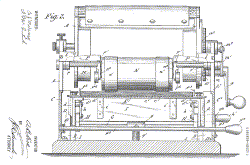
A.B. Dick sold a patented mimeograph machine at or near cost, with the expectation that A.B. Dick would make money on the sale of supplies. A notice appearing on the machine conditioned the sale so that the machine was not allowed to be used with supplies from anyone other than A.B. Dick. The Court stated that the limitation on use of the patented machine was a license:
The sale of a patented machine with a license on how the machine can be used is well accepted and that the limitation on from whom supplies can be purchased is enforceable, since any member of the public can always decline to purchase the machine if he or she does not like the license terms.
The Court considered whether a supplier of ink (Henry) to a purchaser of the machine was liable for infringement under a contributory infringement theory. Said the Court:
We come, then, to the question as to whether the acts of the defendants constitute contributory infringement of the complainants' patent. … Undoubtedly a bare supposition that by a sale of an article which, though adapted to an infringing use, is also adapted to other and lawful uses, is not enough to make the seller a contributory infringer. Such a rule would block the wheels of commerce. There must be an intent and purpose that the article sold will be so used. Such a presumption arises when the article so sold is only adapted to an infringing use. It may also be inferred where its most conspicuous use is one which will cooperate in an infringement when sale to such user is invoked by advertisement.
In this instance, Henry sold the ink knowing the license terms and with the expectation that the ink would be used in contravention of the license. The fair interpretation of the facts is that Henry made the sale with the purpose and intent that the ink would be used in contravention of the license. Whether there were other non-infringing uses of the ink was therefore irrelevant.
From , Federal common law contributory infringement occurred when the infringer supplied a part for a patented machine that has no non-infringing use, or where the supplier intends for the part to be used to infringe the patent by another. Intent can be shown through an actual sale with knowledge that the part will be used in an infringing manner. Intent also can be shown by advertisements, presumably advertisements suggesting that the part be used in an infringing manner.
The situation where a part has no non-infringing use subsequently became modern ‘contributory infringement.’ Selling the part where the seller had an intent that the buyer infringe became modern ‘inducement’ of infringement.
B. Post-1952 Decisions
1. Water Technologies Corp. v Calco, Ltd., 850 F.2d 660
(Fed. Cir. 1988)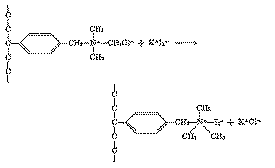
The technology at issue related to water purification. Kansas State professors developed antibacterial resin that was formed into drinking cups and other products for campers and backpackers. Water was purified by contact with the cup and did not require added iodine, chlorine or bromine. Patents addressing the technology were licensed to a subsidiary of Water Technologies, which made and sold the cups and other products.
Gartner, an individual consultant to Calco, modified the resin by adding a small amount of bromine and developed a competing drinking straws composed of the modified resin. Gartner licensed to Calco a trademark for the product and a patent that he obtained on the modified resin. Gartner and Calco were well aware of the prior patents. Gartner told Calco that he added the bromine in an effort to ‘skirt’ the patents. Gartner did not consult with a patent attorney to determine whether his addition of bromine to the patented resin avoided infringement of the patent claims.
Water Technologies and Kansas State University Research Foundation sued Calco and Gartner for direct patent infringement and Gartner for inducing infringement. The trial court found in favor of plaintiffs on the infringement issues.
On appeal to the Federal Circuit Court, Gartner argued that his subjective belief that his product was non-infringing controlled the issue of his specific intent for inducement to infringe. The exculpatory evidence argued by Gartner included the patent that he obtained on the modified resin and his statements to Calco indicating his attempt to ‘skirt’ the patents by adding bromine.
The Federal Circuit Court noted that direct evidence of intent is not required to demonstrate intent to induce infringement. Circumstantial evidence of intent is sufficient. The circumstantial evidence of intent that the Federal Circuit found persuasive included that Gartner had actual control over the manufacture of the product through his trademark license to Calco. Also, Gartner provided all the resin formulations to Calco, helped produce the resins and prepared the consumer instructions. The Federal Circuit held that the evidence offered by Gartner for lack of intent did not overcome the circumstantial evidence relied on by the trial court.
From , we may infer that subjective intent will not save a defendant where that intent is not reasonable (i.e., based on a mistake of law) and where the defendant otherwise acts like an infringer. The America Invents Act (Senate Bill 23), which was recently passed by the U.S. Senate and is awaiting action in the House of Representatives, would overrule to the extent that the case allowed consideration of Gartner's failure to consult a lawyer.
2. Hewlett-Packard Co v. Bausch & Lomb, Inc., 909 F.2d 1464
(Fed. Cir. 1990)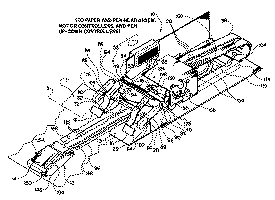
The technology at issue in this case related to X-Y plotters that move a piece of paper in the Y direction while a stylus moves in the X direction. HP’s patent included coating the platen with silicon carbide grit to grip the paper and prevent slippage. B&L admittedly infringed the patent beginning in 1982 or 83, but sold the division that made the infringing product to Ametek in 1985. HP argued that B&L induced infringement by Ametek beginning in 1985 by, among other things, including in the sale documents a specific indemnification against infringement damage of HP’s patent, agreeing that B&L and Ametek would jointly develop a non-infringing plotter, and agreeing that Ametek would not communicate with HP about the HP patent.
The court surveyed the history of inducement of infringement prior to the 1952 Act. The court concluded that “proof of actual intent to cause the acts which constitute infringement is a necessary prerequisite to finding active inducement.” The court concluded that, from all the facts, HP’s intent was to sell the division, not to “actively induce” infringement by Ametek. Note that the intent specified is to cause “the acts which constitute infringement,” not to cause infringement itself. Under this case, the subjective intent of the infringer as it relates to the patent is not important.
The court seemed persuaded by the lack of any sort of control of B&L over Ametek. Both parties were clearly aware of the HP patent. The choice whether to infringe after the sale was Ametek’s, not B&L’s. There was no discussion of whether HP pursued Ametek for direct infringement.
The Hewlett-Packard decision is puzzling to me. On one hand it enunciates a very low standard of intent; namely, intent to induce acts, which, if taken together, would amount to an infringement. On the other hand, it finds that a promise to pay all losses due to a known infringement risk to entice that party to buy an infringing manufacturing operation does not, in fact, induce the other party to take those acts that constitute infringement. The actual decision appears to contradict the reasons given for the decision.
3. Manville Sales v Paramount Systems, 917 F2d 544 (Fed.
Cir. 1990)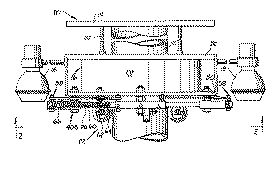
Manville relates to large illumination systems for rest areas that can be lowered to the ground for maintenance. Paramount corporate officers obtained drawings of a patented Manville system from the State of Florida and copied the system. Manville sued Paramount for infringement and sued the corporate officers personally for inducing infringement. The trial court found the officers personally liable for inducing infringement.
The Federal Circuit reversed, stating that “it must be established that the defendant possessed specific intent to encourage another’s infringement and not merely that the defendant had knowledge of the acts alleged to constitute infringement.” The Manville opinion therefore flatly contradicts the Hewlitt-Packard decision as to the level of intent required for inducement. The court found persuasive the trial court’s finding that the officers did not know of the patent until the suit was filed and that the officers thereafter relied on advice of counsel.
I believe that the Manville case is consistent with the actual decision in Hewlett-Packard and that the Federal Circuit simply misstated the standard in Hewlett-Packard.
4. MGM Studios, Inc. v Grokster, Ltd, 545 U.S. 913 (2005)
The case dealt with liability for indirect copyright infringement by the Grokster networked file sharing system. While Grokster addresses copyright, not patent, the Supreme Court incorporated the common law of patent law inducement and contributory infringement into the field of copyright law. Grokster advertised that its file sharing service could be used to copy and distribute copyrighted materials. Grokster's services actually were used by others to infringe copyrights. The Supreme Court determined that this conduct was sufficient to demonstrate Grokster's intent to induce others to infringe and thus supported liability.
The Court interpreted the 'Betamax case' (., 464 U.S. 417 (1984)) where Sony did not infringe copyrights because Sony’s video cassette recorder had substantial non-infringing uses. The Federal Circuit below followed and held that Grokster was not liable because the Grokster service had substantial non-infringing uses, such as sharing public domain works. The Supreme Court stated that the Federal Circuit had misapplied because the presence or absence of non-infringing uses for a product was only one indicator of imputed intent. There are other ways that intent can be inferred, including the classic situation of advertising. Because the facts, including advertising, demonstrated intent on the part of Grokster for others to infringe, and because they did infringe, Grokster was liable.
The Court cites old precedent and the analysis appears to be along the lines of pre-1952 decisional law. Grokster is important because the frank incorporation of patent law into copyright law presumably works both ways – the copyright case is now patent law precedent.
5. DSU Medical Corp. v JMS Co, 471 F.3d 1293, 1304 (Fed Cir.
2006)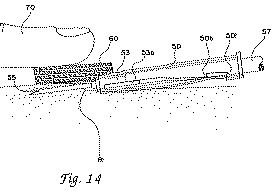
The DSU case is an infringement action by DSU claiming among other things inducement to infringe. The patent at issue related to a needle housing designed to prevent needle stick injuries to medical personnel from large-bore needles, as used in dialysis.
As construed by the trial court, the claims of the patent included a combination of a needle and a guard. An Australian company called ITL supplied guards to JMS, a Japanese medical supply house, which assembled the guards onto needles and sold the products in the U.S. ITL also shipped guards directly to the U.S.
To show inducement of infringement, the patent owner has the obligation to show (a) that the defendant knew of the patent, (b) after the defendant knew of the patent, the defendant actively and knowingly aided and abetted another’s direct infringement, and (c) the other person directly infringed the patent.
The Federal Circuit Court considered the issue of how much intent must be demonstrated to show inducement to infringe. An decision is one in which all of the judges participated and has more weight than a decision by a three-judge panel. DSU argued that the level of intent required should be the intent to perform the act that led to the infringement, which would be the standard enunciated by the case, . The trial court and the Federal Circuit said that the intent must be to infringe the patent. The Federal Circuit quoted from and concluded that the Supreme Court has adopted the Federal Circuit’s standards that proof of intent to infringe must be shown, not proof of intent to cause the acts that infringe.
The court concluded that “the plaintiff has the burden of showing that the alleged infringer’s actions induced infringing acts and that he knew or should have known his actions would induce actual infringements.” The court also stated that the intent requirement “necessarily requires that the infringer knew of the patent.” The Federal Circuit cited its own opinion in . 850 F.2d 660 (Fed. Cir. 1988) and stated that “While proof of intent is necessary, direct evidence is not required; rather, circumstantial evidence may suffice.”
The specific challenge was to a jury instruction, since the jury found no intent to infringe. There was evidence of actual knowledge of the patent and testimony of the subjective belief of non-infringement by ITL supported by two legal opinions of non-infringement. The Federal Circuit was unwilling to overturn the jury verdict of no intent to infringe based on this evidence.
The Federal Circuit did not discuss the scope or adequacy of the non-infringement opinions. If the non-infringement opinions addressed the ITL product in isolation and did not address the combination of the ITL product with a needle, then the opinions could not have addressed inducement.
Although not discussed by the Federal Circuit, the difference between the subjective belief of ITL and that of Gartner in the case is that ITL’s subjective belief was reasonable and based on opinions of counsel, while Gartner's subjective intent was not reasonable.
6. ACCO Brands v ABA Lock and Belkin Components, 501 F.3d
1307 (Fed. Cir. 2007)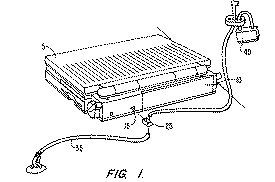
This appeal was the culmination of two jury trials and two appeals to the Federal Circuit. ACCO alleged that ABA and Belkin induced infringement. The technology in question related to computer locking devices. ABA was a Taiwanese manufacturer of locking devices and Belkin the U.S. distributor for those devices. The accused device had two possible ways of use – one infringing and one not infringing.
ACCO’s expert testified at trial as to the infringing use of the device and demonstrated that infringing use. ACCO presented no other evidence of direct infringement by anyone. The Federal Circuit overturned a jury verdict of liability because ACCO failed to prove direct infringement by anyone other than its expert. Sale of the product itself did not demonstrate direct infringement because of the substantial non-infringing uses of the product.
ACCO demonstrates, very expensively, the requirement to prove direct infringement to support inducing infringement.
7. Broadcom v. Qualcomm, 2007-1545, 2008-1162 (Fed. Cir.
2008)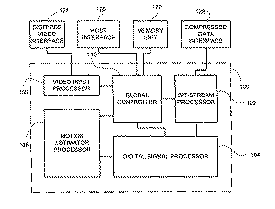
This is one of several cases to address infringement of Broadcom patents to 3G telephone technology. Qualcomm in defense argued that the intent element of inducement to infringe should conform to the Federal Circuit’s recasting of the standards of willful infringement. Qualcomm argued that its actions were not ‘willful’ infringement under that revised standards, and that its lack of willfulness should control whether it had the requisite specific intent for inducement to infringe. The Federal Circuit refused to join ‘willful’ infringement with ‘specific intent’ for inducement of infringement.
The specific question was whether the jury could consider Qualcomm’s failure to obtain a non-infringement opinion as a factor indicating a specific intent to induce infringement. The Federal Circuit decided that if the jury could consider the existence of a non-infringement opinion (see the DSU Medical case, above), then it also could consider the absence of a non-infringement opinion.
As of this writing (March, 2011), the America Invents Act has been passed by the U.S. Senate and is pending in the House of Representatives. If it becomes law, the Act will overrule . Section 298 of the bill provides that failure to obtain a legal opinion will be irrelevant to the question of whether a person intends to induce infringement. The change will generally make it harder for a patent owner to show that someone else intended to induce infringement.
8. SEB v Montgomery Ward & Co., Inc., 2009-1099, -1119 (Fed.
Cir. February 5, 2010)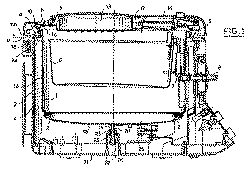
The SEB case extends . to the situation where intent to induce others to infringe is not overt.
SEB owned patent no. 4,995,312 for a deep fryer cooking appliance. Pentalpha purchased one of SEB’s fryers in Hong Kong and directly copied the fryer, making minor cosmetic changes. The SEB fryer purchased in Hong Kong did not have U.S. patent markings. Pentalpha obtained a right-to-use opinion from a U.S. patent attorney, but did not disclose to the attorney that it copied the SEB deep fryer. Pentalpha widely sold its fryers in the US through several retailers and under several names.
SEB sued Pentalpha’s customer Sunbeam for infringement relating to the deep fryer patent and settled with SEB for a payment of $2 million. Pentalpha changed the design in minor ways, but continued to sell the fryers in the US.
SEB sued Montgomery Ward, Global Tech and Global Tech’s subsidiary Pentalpha for direct infringement and inducement of infringement. The trial court found that Pentalpha willfully infringed and induced infringement. Pentalpha appealed to the Federal Circuit.
Pentalpha argued that it did not induce infringement because it had no actual knowledge of the SEB patent. The court concluded that evidence that Pentalpha ‘deliberately disregarded a known risk’ if infringement, and that Pentalpha’s actions were evidence to support actual knowledge of the patent. The factors considered important by the court include: (a) Pentalpha actually copied the SEB product, (b) Pentalpha obtained a freedom to use opinion, but failed to disclose actual copying to its attorney; (c) Pentalpha’s CEO was a named inventor on 29 U.S. patents and well-versed in the U.S. patent system.
The Supreme Court granted certiorari in , on October 12, 2010. The matter was argued on February 23, 2011.The specific issue that will be decided is:
Whether the legal standard for the state of mind element of a claim for actively inducing infringement under 35 U.S.C. 271(b) is “deliberate indifference of a known risk” that an infringement may occur, as the Court of Appeals for the Federal Circuit held, or “purposeful, culpable expression and conduct” to encourage infringement, as this Court taught in …
The question before the Supreme Court is whether a head-in-the-sand defense against inducement of infringement can work or not. SEB argues in its brief that the inducement issues are not necessary to sustain the judgment, since Pentalpha was also found to be in direct infringement.
9.
Wordtech Systems, Inc. v Integrated Networks Solutions,
Inc., 2009-1454 (Fed. Cir. June 16, 2010)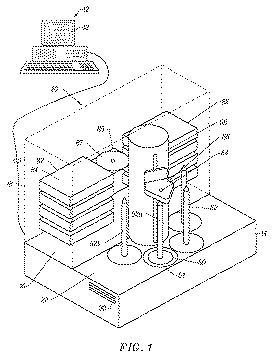
Wordtech owned a patent and sued a corporation and two employees personally for direct infringement, inducement of infringement and contributory infringement. After a jury trial, the trial court found the corporation and individual defendants liable for direct and indirect infringement. The individual defendants argued before the Federal Circuit that they were shielded from personal liability by the corporate veil by analogy to tort law.
The Federal Circuit agreed that the individual defendants were shielded by the corporate form insofar as direct infringement was concerned. However, the Federal Circuit found that the corporate veil did not shield the employees from liability for either inducement to infringe or contributory infringement. Addressing inducement, the Federal Circuit said:
Corporate officers who actively assist with their corporation’s infringement may be personally liable for inducing infringement regardless of whether the circumstances are such that a court should disregard the corporate entity and pierce the corporate veil.
The Court made a similar statement relating to contributory infringement. The result of the case is that the Federal Circuit reversed and remanded for a new trial because the jury instructions were deficient.
The lesson from is that corporate officer and employees should beware. The corporate officer, and presumably outside patent counsel, may be personally liable for advice that they give and decisions that they make that lead the corporation or anyone else to infringe.
11. AstraZeneca v Apotex, 2009-1381, 1424 (Fed. Cir. November 1, 2010)
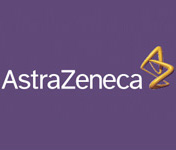 The
case is an appeal from a grant of a
preliminary injunction enjoining infringement.
The
case is an appeal from a grant of a
preliminary injunction enjoining infringement.
AstraZeneca holds patents to a method to use an asthma drug once per day. Apotex applied to the Food and Drug Administration for approval to produce and sell the same drug as a generic for a twice daily use. The request included a drug label very similar to the AstraZeneca original, but with no mention of once daily use and with Apotex’s name inserted in place of AstraZeneca. The ANDA was approved.
The label is a key element for ANDA generic drug approvals because a generic drug manufacturer must include the same label as the original drug.
Twice daily use would not infringe AstraZeneca’s patent; however, the label indicated that the patient should titrate downward to the lowest effective dose. Because the medication came in indivisible unit doses, titrating to the next lower dose would require the patient to administer the drug once per day.
AstraZeneca sued for declaratory judgment and injunctive relief. AstraZeneca argued that Apotex had specific intent to induce infringement of the method claims (1 dose/day) because the label instruction to titrate down to the lowest effective dose in essence instructed patients to try 1 dose per day. Apotex countered the argument by producing evidence that its proposed label directly specified twice daily dosing, but that the FDA required Apotex to remove that language from the label. Apotex was not successful in negotiating other language for the label with the FDA. Apotex did not appeal the label decision by the FDA.
The trial court concluded that Apotex was well aware of the potential infringement and elected to proceed with the label anyway, demonstrating Apotex’s specific intent to induce infringement.
On appeal, Apotex and amici argued that Apotex’s use of the label was compelled by the FDA, which did not believe that the label would cause Apotex to infringe. The Federal Circuit concluded that Apotex’s reliance on the FDA was unwarranted, since the FDA does not resolve patent disputes. The court also said that Apotex had other options, such as appealing the FDA’s label denial, waiting for the patents to expire, seek approval for a lower dose, or obtaining a declaration on the patentability issues. The Federal Circuit Court agreed with the trial court and found that AstraZeneca had a substantial likelihood of success on the merits to support the preliminary injunction.
I strongly suspect that this matter is not over. Apotex now has an excellent argument to the FDA that the approved label infringes the patent and hence that alternative label language should be approved. If Apotex does not have a new ANDA application before the FDA, I will be very surprised.
Conclusions:
To recap, to show inducement of infringement under 35 U.S.C. §271(b), the plaintiff must demonstrate:
1. knowledge of the patent by the defendant;
2. communication by the defendant with another person with the intent of causing that person to infringe the patent; and
3. actually infringement of the patent by the other person.
As to knowledge of the patent, knowledge based on patent marking has not been considered by the courts; however, marking products sold in Hong Kong with notice of a U.S. patent would have avoided the situation. Adding a patent legend to bid drawings would have avoided the situation. Perhaps a standardized patent notice should be included in every paper relating to an invention and every unit of the invention sold in foreign countries. Specific intent to induce another person to infringe can be demonstrated in some cases, particularly where, with knowledge of the patent, the infringer’s advertising or product instructions advertise or instruct how to infringe the patent.
In those cases where intent cannot be specifically demonstrated, the intent of the accused infringer can be inferred from all of the facts and circumstances. Factors that will be considered include whether the defendant exercised any control over the infringer,
The step of communicating with another person is sometimes stated in terms of ‘aiding and abetting’ the infringement by the other person. Activities such as assisting the infringer and controlling the actions of the infringer in any manner also may arise to the level of inducing infringement.
Circumstantial evidence of intent to induce infringement may be refuted by evidence of the subjective belief of the accused infringer, provided that the subjective belief is reasonable. One way to show that a subjective belief is reasonable is to obtain one or more opinions of counsel. A reasonable ‘freedom to use’ opinion or a reasonable ‘non-infringement’ opinion allows a defendant to raise advice-of-counsel as a defense, which the Federal Circuit is loathe to ignore. I suggest that the Federal Circuit is likely to find an infringer liable in the face of such an opinion only if the opinion is clearly unreasonable and the infringer knows that it is unreasonable.
Acting without advice of counsel when a person is aware of a patent is very dangerous, see the fate of Mr. Gartner in Water Technologies, supra; however section 298 of the America Invents Act will overrule this result and the similar result in Broadcom v Qualcomm.
